

UGA SYMPHONY ORCHESTRA

TUESDAY, FEBRUARY 25, 2025 at 7:30 p.m.
HODGSON CONCERT HALL
Le Chasseur Maudit
Creation The Power of UGA Composer in Residence
Tuesday, February 25, 2024 at 7:30 p.m.
Hodgson Concert Hall
UGA Performing Arts Center
University of Georgia Symphony Orchestra
Mark Cedel, Conductor
Nicholas Han, Assistant Conductor
PROGRAM
Dreaming of Flying for Orchestra
Student Composer-in-Residence Competition Winner
World Premiere Performance
INTERMISSION
Symphony No 1, E minor, opus 39
Andante, ma non troppo – Allegro energico
Andante (ma non troppo lento)
Scherzo, Allegro
Finale (Quasi una Fantasia) Andante – Allegro molto
Cesar Franck (1822-1890)
Jason Capehart (b. 2001)
Jean Sibelius (1865-1957)
Le Chasseur Maudit (The Accursed Huntsman) scored for 2 flutes and piccolo, 2 oboes, 2 clarinets, 4 bassoons, 4 horns, 2 trumpets, 2 cornets à pistons, 3 trombones, tuba, timpani, bells, cymbals, triangle, bass drum, and strings. 15:00
César Franck (1822–1890) was a Belgian-born composer, organist, and music teacher who became one of the most influential figures in French Romantic music. Known for his rich harmonic language, cyclic structures, and masterful orchestration, he composed in various genres, including symphonic, choral, and chamber music. His works, such as the Symphony in D minor and Violin Sonata in A major, showcase his deeply expressive style and innovative use of form. As an organist, he was revered for his improvisational skills and played a key role in shaping the French symphonic organ tradition. Though underappreciated during much of his life, Franck’s music gained recognition after his death, securing his legacy as a cornerstone of 19th-century French music.
César Franck’s Le Chasseur Maudit (The Accursed Huntsman) is a symphonic poem composed in 1882, inspired by a ballad from German poet Gottfried August Bürger. The story follows a proud and reckless count who defies divine law by hunting on the Sabbath. Ignoring the sound of church bells calling the faithful to prayer, he spurs his horse forward, driven by an insatiable thirst for the chase. As his hunt reaches its peak, a supernatural voice thunders a curse upon him, condemning him to ride eternally, pursued by demonic forces. His joy turns to terror as he realizes there is no escape; his punishment is relentless, and he is doomed to an endless, nightmarish flight through the shadows of the underworld.
The work begins, as one might expect, with the horns blasting a hunting call at full volume. The horns then fade out, and a pure, singing passage in the cellos illustrates the gently rolling hills and faithful worshippers heading to church on a peaceful Sunday—until the horns interject once again with their hunting call. This time, the peaceful cello theme returns with church bells and woodwinds gently chiming, calling all to worship. Defiantly, the horns continue to build in the background until we reach a climactic, sweeping full orchestral moment.
The second part of the work, “The Hunt,” begins suddenly with an abbreviated version of the horn call we’ve already heard a few a times before. This time though, the woodwinds respond as the collective voice of the faithful, repurposing the melody of the horn call as a desperate, and at times admonishing, plea to the Count to call off the hunt and find his rightful place in the pews of the church instead. The strings begin to build ominously with interjections from the winds and brass, ramping up the intensity of the hunt. Now the full orchestra is behind the Count, urging him on as he speeds through the forest at an electrifying pace. The woodwinds provide fleeting virtuosic passages and trills, while the brass act as the driving force behind this forbidden hunt. Soon though, the cello theme from the first section returns in variation, following the Count even as he leaves the church far behind.
Now we begin the third section of the work, “The Curse.” In a cruel twist of fate, the horns who once championed the Count’s hunt are now the start to his downfall, their sound transformed by being played “stopped” (the horn players achieve this metallic sound by placing their hand in the bell). String tremolos fade in and out as a new “Curse” theme is intoned by the clarinets and trumpets, followed by the trombones. The Count cannot move and his horn will not sound— suddenly, a voice comes down from the heavens to curse him to be chased by demons for all
eternity. The orchestra builds to a crashing triple-forte as the curse is complete, and suddenly the Count is off again! But this time, he is the one being hunted. Thus begins the final section of the tone poem, “The Demon’s Chase.” Here we hear echoes of Berlioz’ famous final movement of Symphonie fantastique depicting the witches’ Sabbath. The music once again dramatically builds in pace and volume as the Count furiously tries to escape the demons—fleeting downward scales and trills from the high woodwinds abound, as well as rapid interjections from the brass. The strings join in with their frantic ostinatos, and before we know it the orchestra fades to a whisper before providing a final, staccato G-minor chord, God’s final word to the doomed Count.
Dreaming of Flying
scored for 2 flutes, 2 oboes, 2 clarinets, 2 bassoons, 4 horns, 2 trumpets, 3 trombones, tuba, timpani, percussion, piano, and strings 7:00
Program notes by the composer Jason Capehart, Jr. (b. 2001) is a New Jersey-born composer, arranger, and percussionist. His music has been described as “cinematic” by the New York Classical Review. He primarily composes concert works for large ensembles and chamber ensembles, but has also written for soloists. Jason’s work is driven by a love for story-telling and a genuine interest in the stories of others. Many of his works are programmatic to varying degrees based on his own experiences and shared human experiences. Jason’s works have been performed throughout New Jersey; in New York City; in Athens, Georgia; and in Orlando, Florida. He completed his Bachelor of Music at Rutgers University in New Brunswick, NJ and is currently pursuing his Master of Music here at the University of Georgia.
Dreaming of Flying takes place within a dreamscape, where a dreamer is soaring freely through the sky, unbridled by the confines of waking life. But dreams can’t last forever, and the blare of an alarm clock begins to seep into the dreamscape. Despite the dreamer’s struggles to maintain their course of flight, they are awoken by the alarm clock, and the divide between the dreamscape and waking life is dissolved.
While this piece is not based on a specific dream I’ve had, I’ve had a number of vivid dreams in my life, and I’ve wanted to musically capture the essence of dreaming for some time. Instead of simply writing a piece about flight, I wanted to examine the idea of flying within the lens of a dream and how I might portray that musically.
I am incredibly grateful and honored to have been selected for this opportunity through the Student Composer-in-Residence Competition
Symphony No. 1 in E Minor, Op. 39
scored for 2 flutes, 2 oboes, 2 clarinets, 2 bassoons, 4 horns, 3 trumpets, 3 trombones, tuba, timpani, percussion (bass drum, cymbals, triangle), harp, and strings 41:00
Jean Sibelius (1865–1957) was a Finnish composer whose music played a vital role in shaping national identity and defining the Nordic symphonic tradition. Best known for his seven symphonies and the tone poem Finlandia, Sibelius developed a unique musical language that blended sweeping melodies, rich orchestration, and an affinity for nature-inspired themes. His early works, influenced by Romantic composers like Tchaikovsky, gradually evolved into a more
austere and abstract style, characterized by organic thematic development and an economical use of material. Deeply connected to Finland’s struggle for independence from Russia, his compositions often evoke the vast, rugged landscapes of his homeland, making him a national hero. Despite withdrawing from composition in his later years, his legacy endures as one of the most original and influential symphonists of the 20th century.
Jean Sibelius composed his Symphony No. 1 in E Minor in 1898–99, marking his emergence as a symphonist of profound originality and emotional depth. Though influenced by the sweeping Romanticism of Tchaikovsky, particularly in its lush orchestration and dramatic gestures, the symphony already bears the hallmarks of Sibelius’ unique voice. It was written at a time of growing Finnish nationalism, and while it does not directly reference folk melodies, its brooding lyricism and bold orchestral colors evoke the spirit of the Finnish landscape. The work premiered in Helsinki in 1899, conducted by Sibelius himself, and was later revised in 1900, the version most commonly performed today.
The first movement (Andante, ma non troppo – Allegro energico) opens in a strikingly original manner: a lone clarinet, floating over a soft timpani roll, introduces a melancholic theme, creating an air of mystery and solitude. This moment of quiet introspection is soon interrupted by the surge of the full orchestra, launching into an urgent and passionate Allegro. The movement is characterized by sweeping, restless melodies and dramatic contrasts, with Sibelius’ signature use of orchestral color lending depth and intensity. Throughout, the music maintains a strong sense of momentum, culminating in a powerful, storm-like conclusion.
The second movement (Andante, ma non troppo lento) is one of Sibelius’ most lyrical and poetic creations. It unfolds with a warm and melancholic theme, first introduced by the strings, later taken up by other sections of the orchestra in a song-like manner. There is a wistful, almost nostalgic quality to this movement, filled with longing and introspection. At times, the music swells with passion, but it always returns to a sense of intimate reflection, showcasing Sibelius’ ability to convey deep emotion through orchestral color and subtle harmonic shifts.
The third movement (Scherzo: Allegro) is an electrifying contrast to the preceding Andante. It bursts forth with relentless rhythmic energy, driven by aggressive, galloping strings and sharp, punctuated brass interjections. The music rushes forward with unstoppable momentum, at times evoking the raw power of nature — a theme Sibelius would explore further in his later symphonies.
The Trio, slower in tempo, is dominated by horns, clarinets, bassoons, and flutes — instruments creating an atmosphere that is, in equal parts, pastoral idyll and mysterious oracle. A recapitulation of the scherzo follows.
The final movement (Finale: Quasi una fantasia) is the emotional core of the symphony, unfolding as a vast and dramatic narrative. Beginning with a sweeping, almost cinematic theme, it moves through sections of stormy turbulence and aching lyricism. The title Quasi una fantasia (meaning “almost a fantasy”) hints at the movement’s free-flowing and unpredictable structure. There are moments of grandeur, but also of sorrow, culminating in a tragic and cathartic climax. Finally, the return of the hymn — in E major — brings much-needed respite at first, but the tonality soon changes back to E minor and with it, the mood darkens and more and more dramatic elements appear. Yet the tempo remains stately and dignified, which only increases the tension at the end of this remarkable symphony.
Now in his 31st year at UGA, Mark Cedel brings a wealth of professional experience to his position as Director of Orchestral Activities. Prior to his appointment at UGA, he was Associate Conductor of the Charlotte Symphony Orchestra. In his four seasons with that orchestra, he conducted over 200 performances; appearing on every series offered by the orchestra. Before joining the Charlotte Symphony, Cedel was Principal Viola and Assistant Conductor of the Charleston (SC) Symphony Orchestra for nine years. While in Charleston, he served for two seasons as that orchestra’s Acting Music Director. From 1986-1990, he was a member of the artist faculty at the Brevard Music Center and was principal conductor of the Brevard Repertory Training Program.
In addition to directing orchestral activities at UGA, Cedel served as professor of viola from 19942002. During that period he performed, toured, and recorded regularly as extra/substitue viola with the Atlanta Symphony Orchestra, including its northeast tour with concerts in Carnegie Hall. He returned to teaching viola for the 2009-2010 academic year, while a search was conducted to fill the position.
Cedel has been associated with many orchestras in the southeast. This includes Principal Viola of the South Carolina Chamber Orchestra and the Guest Principal Viola of the Savannah Symphony, and orchestras in Augusta, Macon, and Jacksonville.
Cedel earned a bachelor of music degree in viola performance from the Curtis Institute of Music where he was a student of Joseph dePasquale, and studied chamber music with members of the Guarneri Quartet, Budapest Quartet and Beaux Arts Trio. He holds a master of music degree in conducting from the North Carolina School of the Arts.
Born and raised in Seattle, Washington, Nicholas Han earned his Undergraduate degree in Violin Performance at Central Washington University in 2020, and his Masters in Orchestral Conducting at Oklahoma State University in 2023. He is currently pursuing his Doctoral of Music Arts degree at University of Georgia.
In 2022, Nicholas was named assistant conductor for the Oklahoma Chamber Symphony and was the Apprentice Conductor for the Oklahoma City Philharmonic in May 2023. He also is currently the Cover Conductor for the Gwinnett Symphony Orchestra. His recent conducting engagements include guest conducting LA Conducting Workshop and Competition Orchestra and Gwinnett Symphony Orchestra. During the summer of 2022, Nicholas was selected as one of 3 winners for the ICWC (International Conducting Workshop and Competition) in Atlanta, Georgia. He was also selected as a 1st place winner and received the Audience Prize in the LA Conducting Workshop and Competition in Garden Grove, California.
He has worked with Mark Gibson, Neil Thomson, Diane Wittery, and Philip Greenberg. His principal mentors include Nikolas Caoile, Thomas Dickey, Alexander Mickelthwate, and Mark Cedel.
VIOLIN I
Carlos Brena, co-concertmaster
Jhonni Campos, co-concertmaster
Sarah Nienhiser
Clarissa Tamara
Brian Roach
Alexis Boylan
André Araújo de Souza
Zeyu Yuan
Lela Stair
Chelsea Afful
Simms Murray
Ellis Kim
Adelmo Giménez
Rohan Pise
Rea Aiyer
Victor Rosin
VIOLIN II
Ori Kang, principal
Sage Codispoti
Ruanak Das
Nick Olmstead
Kiera Johnson
Surya Blasiole
Athziri Moreno-Martinez
Jen Edwards
Sarah Wheeler
Briana Darden
Leo Jahn
Hazel Moreno
Shazan Samnani
Chloe James
Rafaela Moraes Michel
Mark Cedel, Conductor
Nicholas Han, Assistant Conductor
VIOLA
Rachel Liu, co-principal
Asha Baylor, co-principal
Jenni Perng, assistant principal
Kailey Ford
Daniel Boscan
Marissa Evans
Mason Minutella
Adam Starks
Ashley Belscher
Clinton Stempien
Vic Jeon
Dorothy Park
Tess Redden
CELLO
Gabriella McClellan, principal
Tristan Dempsey, assistant principal
Joshua Nguyen
Thomas LaMon
Olivia Durrence
Ryan Dater
Ian Koontz
William Slater
Joshua Aderhold
Benjamin Hackworth
Rafael Sobrinho
BASS
Wueliton Dal Pont, principal
Bianca Wilson
Michael Farrick
Austin Carter
Ricardo Karelisky
Jordan Askew
Madeline Bower
Peyton Lightcap
FLUTE
Emily Elmore, principal
David Ma
Lauren Wiggins
OBOE
Emma Gordon, principal
Anisa Herbert
Marissa Ankeny
Xander Herman
CLARINET
Timothy Fitzgerald, co-principal
Claudia Reve Romero co-principal
Emily Johnston
BASSOON
JT Holdbrooks, principal
Hsin Cheng
Natasha Pizarro
Drew Kruszynski
HORN
Joshua Wood, co-principal
Connor Parr, co-principal
Marianna Schwark
Anleah Walker
Baylee Cook
TRUMPET
Victor Pires, principal
Will Cuneo
Will Tomaszewski
Colin Kennedy
TROMBONE
Jose Vasquez, principal
Ben Novo
Thomas Pajares
Victor Guevara, bass
TUBA
Jack Neja
PERCUSSION
Hsiao Huang, principal
Grayson Pruitt
Meme Walton
Dane Warren
KEYBOARD
Tiffany Yin
HARP
Isabel Hardy
LIBRARIAN
Alexis Boylan
PERSONNEL and PRODUCTION
Ricardo Karelisky

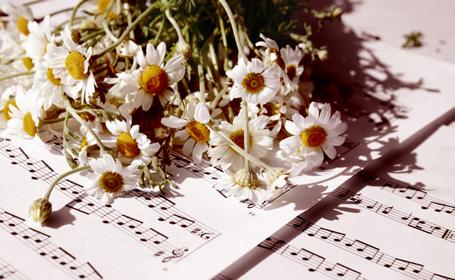
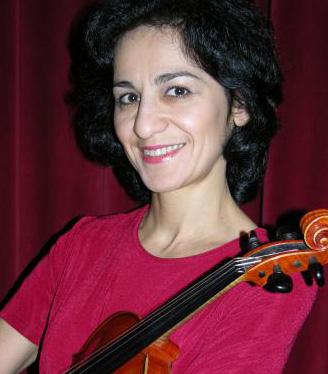
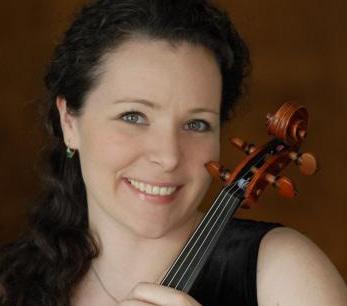
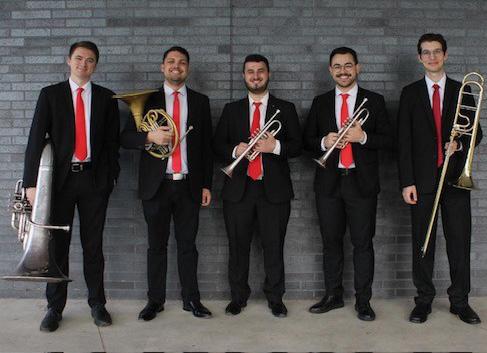
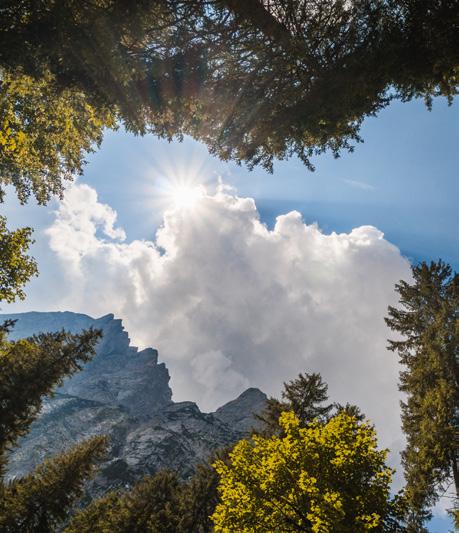
FRI 2/28
6 p.m.
Dancz Center For New Music FREE CONCERT
FRI 2/28
7:30 p.m.
Ramsey Concert Hall FREE CONCERT RECEPTION TO FOLLOW
COMPOSITION AREA: NEW WORKS RECITAL 3
Dancz Center for New Music is located in room 264 in the Hugh Hodgson School of Music
FACULTY ARTIST SERIES: SHAKHIDA AZIMKHODJAEVA, violin
Born in Tashkent, Uzbekistan, Shakhida Azimkhodjaeva began violin studies at the Tashkent State Conservatory’s Special Music School. At age eleven, she made her debut with the Uzbekistan Symphony Orchestra and won the Uzbekistan National Violin Competition. Azimkhodjaeva graduated from the Moscow Tchaikovsky Conservatory where she studied with Professor Irina Medvedeva.
MON 3/10
7:30 p.m.
Ramsey Concert Hall FREE CONCERT
FACULTY RECITAL: MAGGIE SNYDER, viola
Violist Maggie Snyder is Professor of Viola at the University of Georgia, Principal Violist of the Chamber Orchestra of New York, with whom she records for Naxos, and is on the ArtistFaculty of the Brevard Music Festival. She has performed solo recitals, chamber music, concertos and as an orchestral musician throughout the United States and abroad.
TUES 3/11
5:30 p.m.
Ramsey Concert Hall FREE CONCERT
BULLDOG BRASS SOCIETY
The Bulldog Brass Society is the premier graduate brass quintet at the University of Georgia. The Bulldogs were created in the fall of 1996 by Frederick Mills, founding member of the Canadian Brass and professor of trumpet at the Hodgson School until his passing in 2009.
TUES 3/11
7:30 p.m.
Hodgson Concert Hall FREE CONCERT
“I
WILL LIFT UP MINE EYES” COMBINED CHOIRS CONCERT
This concert features the UGA Glee Clubs and University Chorus. Thom Dixon will conduct his DMA recital with the University Chorus – repertoire to include Adolphus Hailstork’s choral/orchestral cantata, “I Will Lift Up Mine Eyes,” composed in memory of the great Undine Smith Moore, often referred to as the Dean of Black Women Composers. Daniel Shafer will conduct the Glee Clubs along with graduate conducting students. Daniel Shafer will conduct the Glee Clubs along with graduate conducting students.
